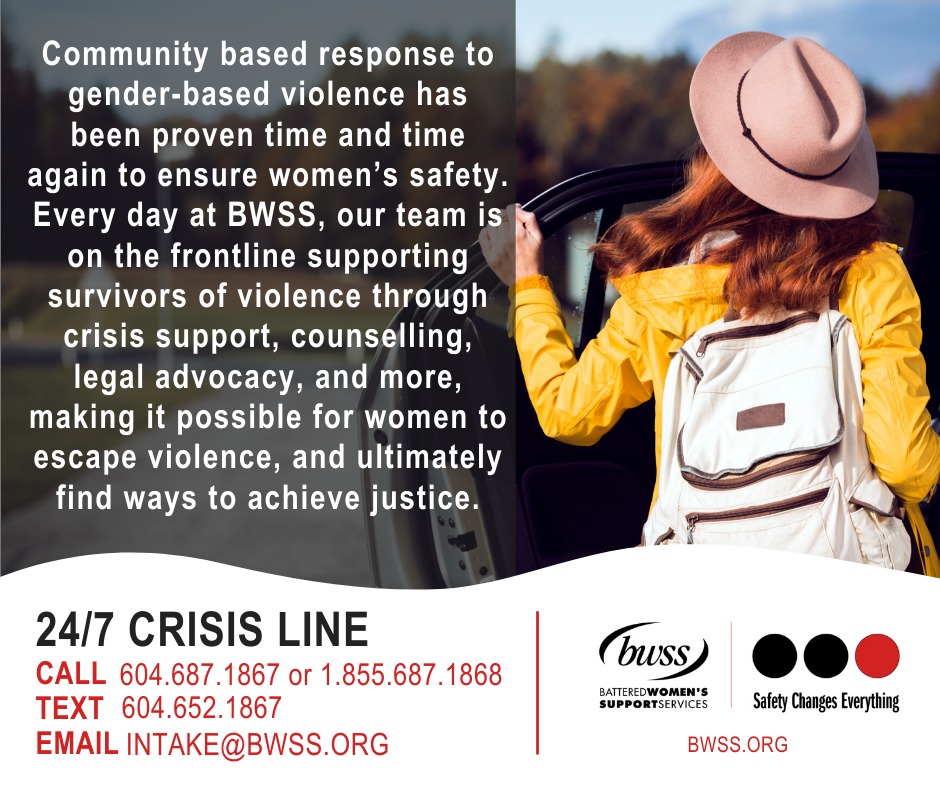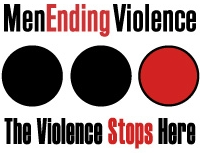
Community-based organizations create safety
On June 5, 2020, the family of Jennifer Quesnel issued a statement to end speculation about the circumstances of her death. A family member of the mother of three killed in a suspected murder-suicide on Salt Spring Island says Jennifer was ambushed and shot by her abusive estranged husband.
“He couldn’t stand to see her happy and if he couldn’t be happy, neither could she. It was a selfish act by a coward and bully and committed in the most cruel and premeditated way,” the family statement says.
Since COVID-19 social distancing measures were mandated in Canada, Battered Women’s Support Services (BWSS) has been tracking (aren’t we doing this still?) what appears to be a statistical spike women and girls who have been killed men they once trusted.
Femicide, the homicide of women, is a leading cause of death among women in Canada. Women in Canada are killed by intimate partners (husbands, lovers, ex-husbands or ex-lovers) more often than by any other type of perpetrator. Although homicide rates are generally higher for males than females, females are at a much higher risk of homicide by their male intimate partners. In 2015, close to a half (48%) of all solved homicides involving a woman victim were committed by a male spouse or other intimate partner.
Murder-Suicide
In Canada, over the past decade, 77 percent of murder-suicide incidents involve at least a victim that was related to the killer, moreover an intimate partner. This percentage is created by the number of reports made to public records, which is thought to be mostly under-reported. Depending on the jurisdiction, murder-suicides aren’t always recorded with specific information, such as the relationship or history of the murderer and the victim. This is because the abusive partner is no longer living and criminal charges will not be filed on the killer. Anti-violence advocates continue to pressure for a more thorough and accurate accounting of murder-suicides linked to domestic violence. The presence of stalking behaviour by the perpetrator combined with the access to firearms presents the high lethality potential.
Separation is a common theme found within spousal murder-suicide where half of the cases occur after the couple have either separated (26%), were in the process of separating (9%), or had expressed a desire to separate (15%).
Leaving an Abusive Partner
People routinely ask, “Why doesn’t she leave? Why does she stay?”. Pre-COVID-19 and now in the context of coronavirus, the answer is not that simple. There are many barriers to safety in an abusive relationship. Leaving is often dangerous and there are many factors an abused partner must consider in the analysis of how to respond to an abusive partner. With the recent loosening of restrictions placed under coronavirus, we need to remain vigilant and ask a more effective question:
“Why does the abusive partner inflict violence and how can I help the survivor gain access to safety?” (link how to help a friend)
The statistics outline the reality that the most dangerous time for a survivor/victim is when she leaves the abusive partner; 77 percent of domestic violence-related homicides occur upon separation and there is a 75 percent increase of violence upon separation for at least two years. These valid concerns must be addressed with safety planning.
The following are common barriers:
- Isolation from friends, family, community support, resources, as abusive partners seek to cut off survivors from support networks as a control mechanism
- Children fear for their safety if the abusive partner has threatened to hurt them if she leaves, custody concerns (such as the abusive partner gaining custody which occurs in more than half of cases); child abuse that has occurred as a result of trying to leave in the past
- Fear of retaliation; of being killed; of the abusive partner hurting loved ones; of being stalked; of not being believed; of unsupervised visits with the abusive partner putting children at risk
- Physical harm that occurred after trying to leave or after having called the police or after having sought medical attention
- Threats of suicide abusive partner may make threats to hurt their partner/children, other loved ones and/or pets; threats to call Canada Border Services Agency or Immigration Canada; threats to take the children; threats to “out” (as in coming out?) their partner to family or coworkers, etc.
- Economic necessity: the abusive partner may control the finances or be the sole source of finances for the family; the abusive partner may have destroyed the survivor’s credit or forced joint accounts so starting over financially is not feasible.
- Lack of resources or information about available resources such as lack of transportation to services, lack of access to the internet to find services or lack of resources in the survivor’s language.
- Shelters are full and there is nowhere to safely go
- Hope/belief that partner will change, often resulting from manipulative tactics by the abusive partner.
- A connection to partner’s well-being: fear that the abusive partner will be arrested, imprisoned, deported etc. which may have consequences for retaliation, finances, and children.
- Failure of the criminal legal system: with a very low prosecution rate, survivors are not likely to pursue prosecution when they will have to be revictimized in court without any meaningful results. Perpetrators often threaten the partner if they don’t recant and even when victims press charges, did this have to be in quotations? it often only leads to a “slap on the wrist” for the perpetrator. There have been instances where the victim is wrongfully arrested by police for allegedly perpetrating domestic violence.
- Racism and homophobia in the criminal justice system that results in a fear of turning to resources such as the police or courts.
- Culture/religion/family pressures to stay together
- Shame or belief that the abuse is their fault, largely because of societal victim blaming.
- Immigration status: fear of deportation without partner’s support, fear of separation from children, law enforcement etc.
According to a B.C. government report from 2016, every year in BC, more than 13,000 people seek police assistance to stop physical or emotional abuse at the hands of a current or former spouse or dating partner. Each year in BC, more than 30,000 women and children affected by domestic violence are referred to violence against women counselling and outreach programs and more than 40,000 individuals are supported by police-based, community-based, and court-based victim service programs for the first time.
In addition, more than 18,000 women and children access transition houses and safe houses to escape violence or abuse. As well, an average of 232 women were admitted to a BC hospital for severe injuries sustained during intimate partner violence.
Under the pressure of COVID-19, women continue to leave abusive partners
We believe that every woman should have a team supporting her before, during, and after separation. Since mid-March 2020, BWSS scaled up our crisis line to operate 24/7 and we have supported thousands of callers to make safety plans. In the middle of a global health pandemic, we’ve assisted dozens of women to leave abusive partners, such as when shelters have been full, we offer supportive temporary shelter for women and children in a local Vancouver hotel.
Community-based response to gender-based violence has been proven time and time again to ensure women’s safety. Every day at BWSS, our team is on the frontline supporting survivors of violence through crisis support, counselling, legal advocacy, and more, making it possible for women to escape violence, and ultimately find ways to achieve justice.
Justice looks different for all survivors, and more than anyone else, it is survivors who know what they need. For some, justice means going to the police, while for others, justice might mean writing a letter telling the perpetrator what they did was not okay, and for some survivors, justice might mean sharing their story through social media. At BWSS, we support a survivor’s journey to justice how they see it by holding space, providing information, resources, and emotional support.
For every woman and child who is killed, there are thousands more living in fear. The good news is that women are leaving abusive relationships now more than ever. When women have access to an advocate and the benefits of a women’s organization, transition house, or specialized community-based service, they are safer.




